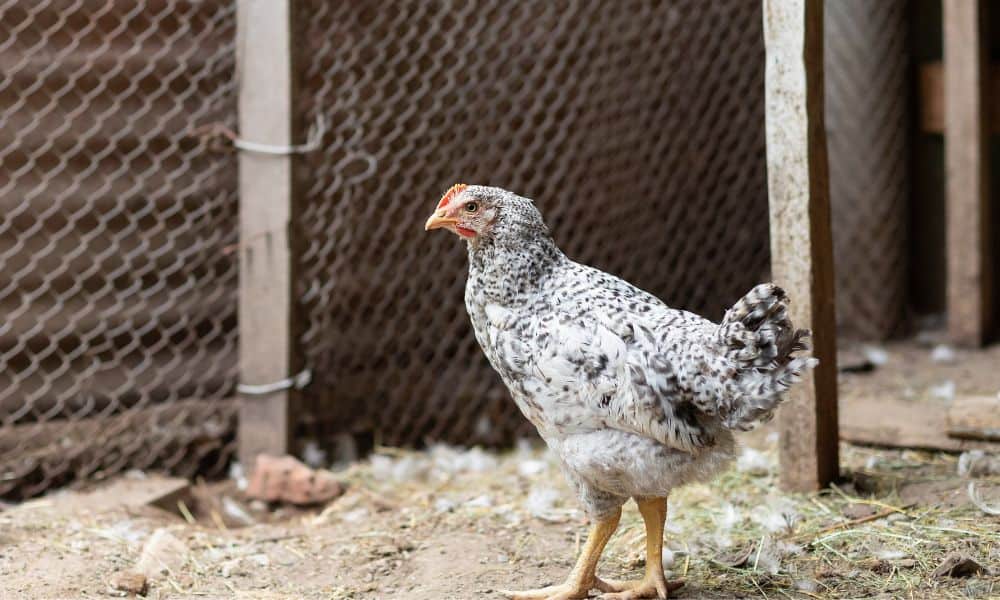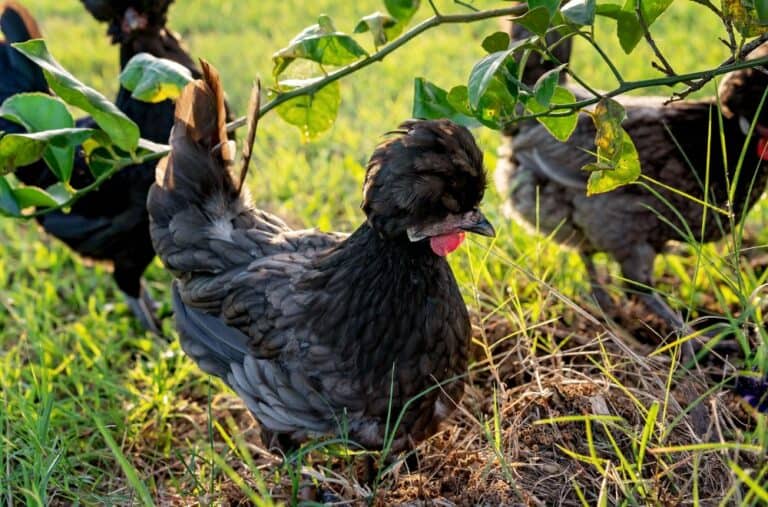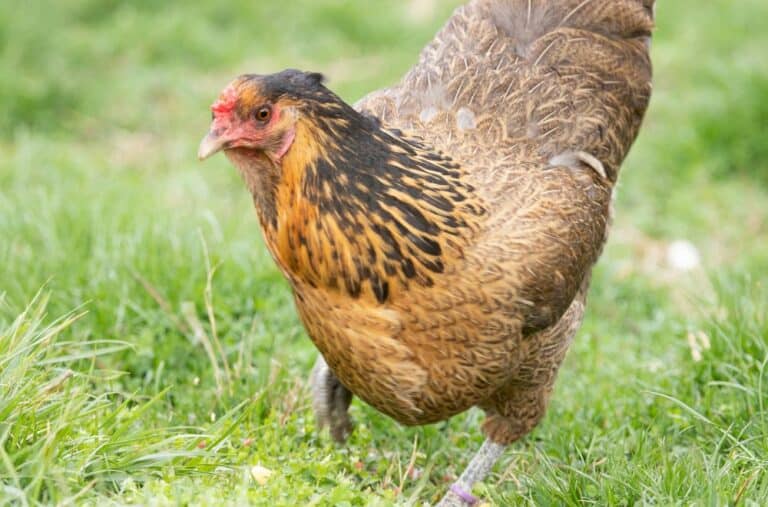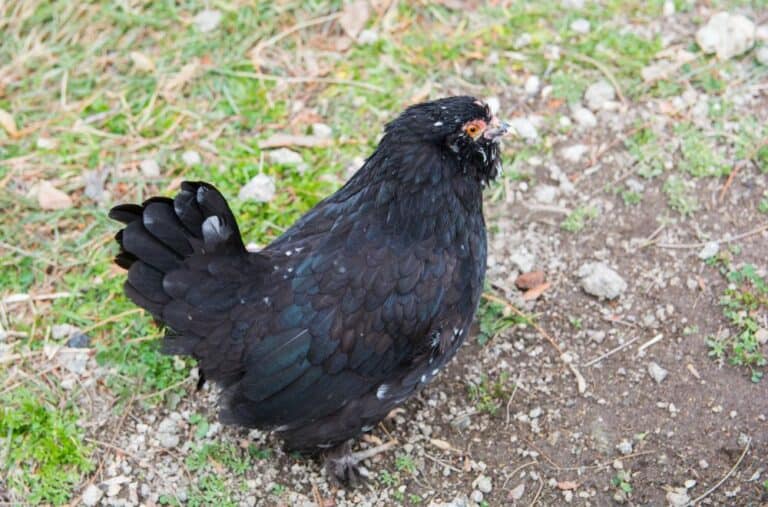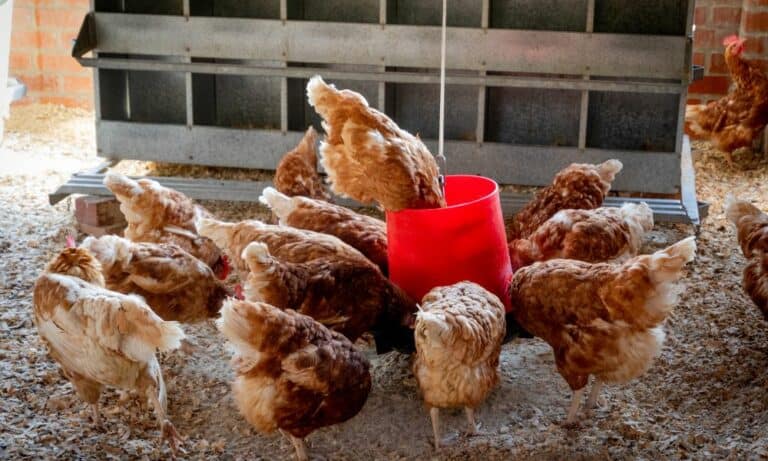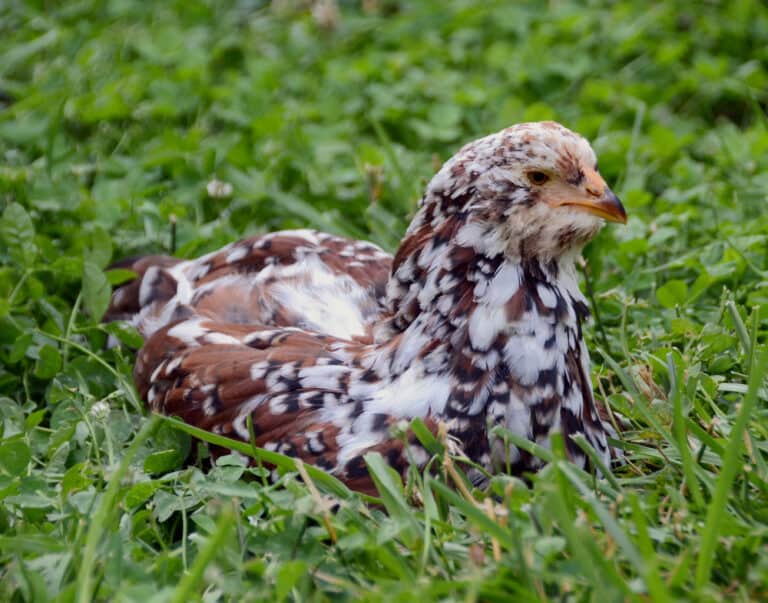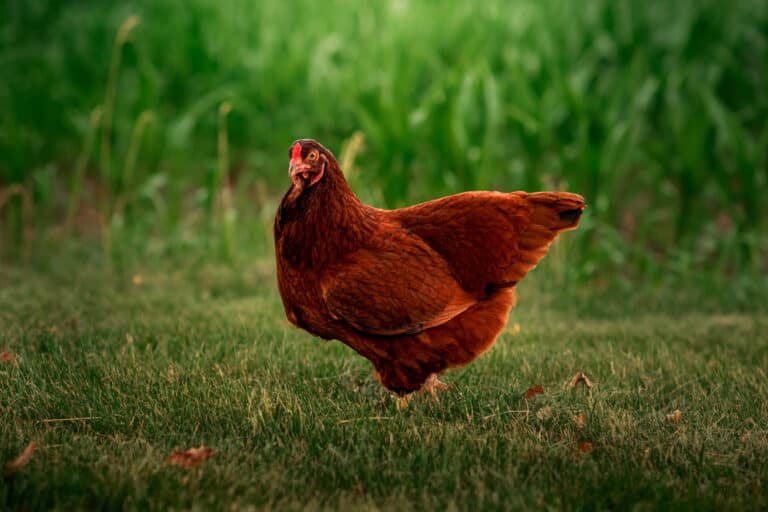If you want to add a distinctive and attractive chicken to your flock, choosing one with a striking gray plumage could be just the answer – and to help you choose the right one for your needs, in this post, we list some of the most popular gray chicken breeds.
What is a gray chicken?
Although it might seem obvious that a “gray” chicken is simply one that is gray in color, it’s not quite that simple.
According to authoritative organizations such as the American Poultry Association and the Poultry Club of Great Britain, only a few breeds have an officially accepted “gray” variation.
However, many other breeds have colors with official names such as “lavender” and “blue” that nevertheless appear to be an attractive shade of gray.
At the same time, to confuse matters, other breeds exist – notably the Norfolk grey and the Scots grey – that have “gray” in the name (or “grey”, the British spelling) but that don’t come in gray at all.
To keep things simple, in this post we have focused on breeds that look gray, whether they are technically called gray or whether they are officially considered lavender, blue or anything else that appears gray.
So now we’ve cleared that up, let’s jump in and find out about some of the most popular breeds of chicken that come in gray.
Gray Chicken Breeds
1. Blue Andalusian
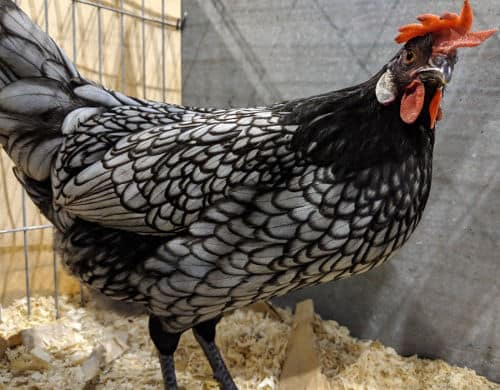
The blue Andalusian, known in Spanish as the Andaluza azul, is a handsome breed from the Andalusia region in southern Spain. They were exported to Britain and the United States from around the mid-19th century and are appreciated for their hardiness and independence.
The gray or blue coloring in this chicken is caused by the combination of a dilution gene and a gene for black plumage.
If an individual chicken has a single copy of the dilution gene, it will have the distinctive blue-gray plumage. However, if it has two copies of the gene, it will have a lighter off-white color while no copies of the gene will leave the bird with a much darker plumage.
The result is that blue-colored birds are twice as common as either the off-white versions or the dark versions.
Blue Andalusians can sometimes have a slightly nervous temperament, and they also tend to be a noisy breed. However, they produce a moderate number of large white eggs and can lay into the winter, making them a good low-maintenance egg-laying breed to keep.
2. Australorp
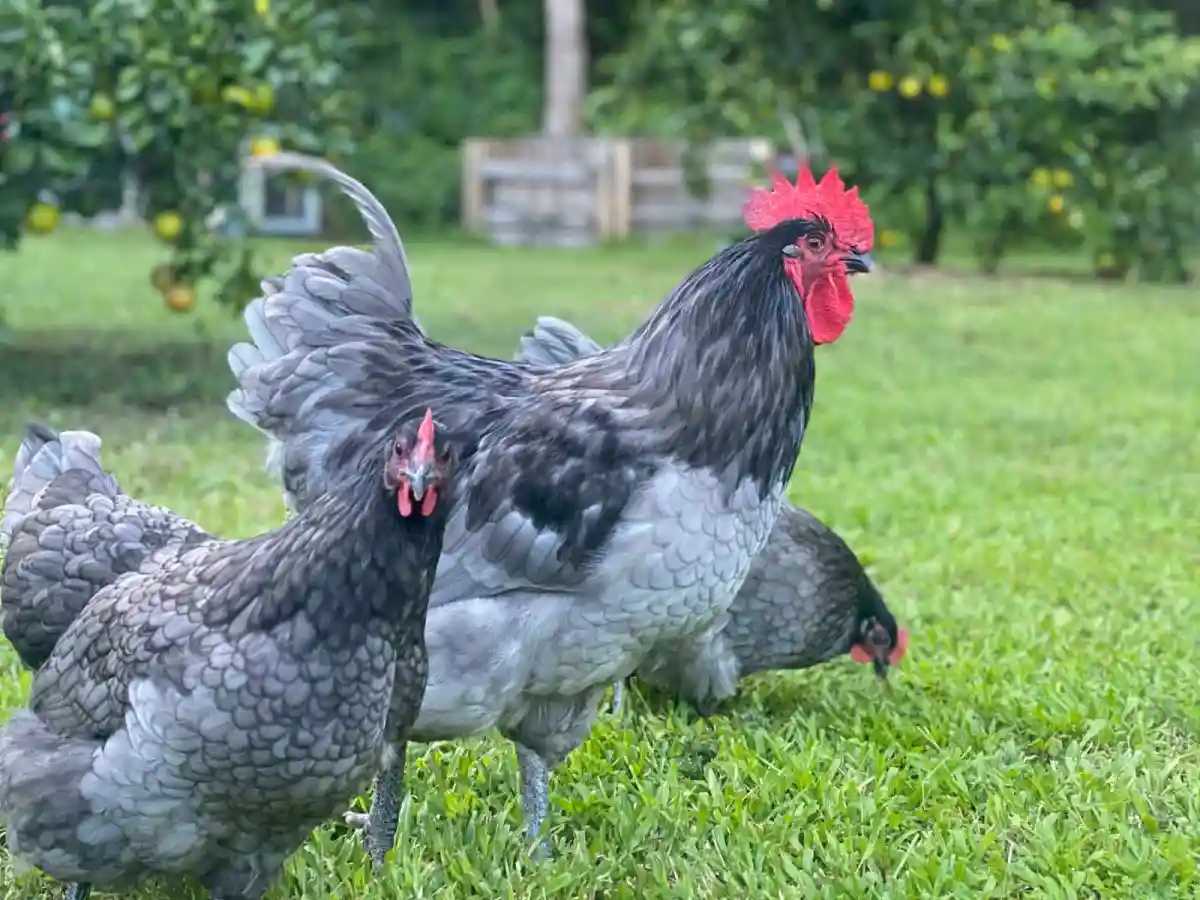
The Australorp is an Australian breed that’s famous for laying a prodigious number of eggs – in their most productive early years, Australorp hens are capable of laying in excess of 300 light brown eggs.
While the most common color for this breed is black – and in the US, black is the only officially recognized color – the Australian Poultry Standard also recognizes white and blue.
As well as being among the most prolific egg-layers, they are also large chickens that can be kept for meat, making them one of the best choices if you’re looking for a solid dual-purpose breed.
Furthermore, they have a docile, friendly disposition, making them a great option for chickens that will be around children.
3. Plymouth rock
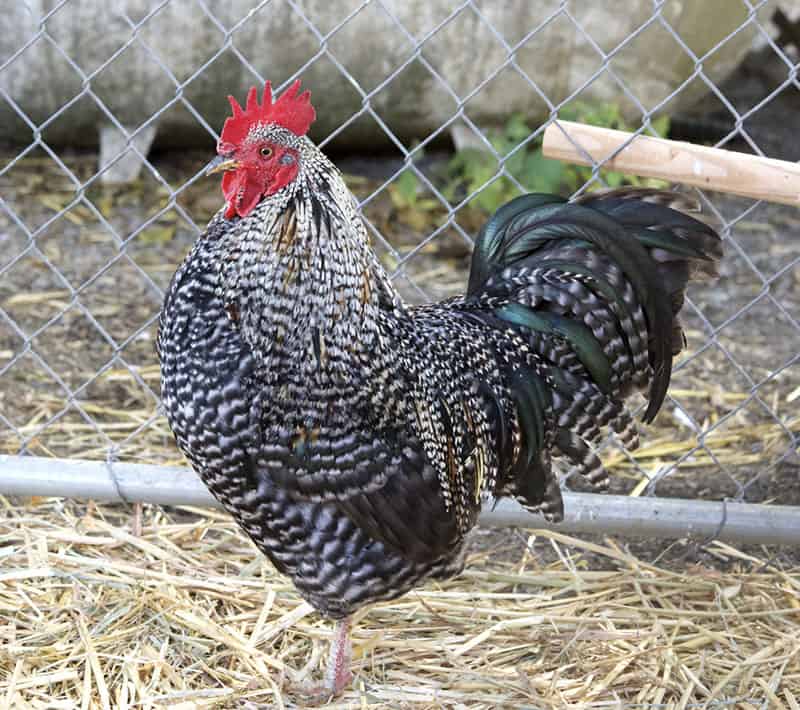
Like the Australorp, the Plymouth rock is another popular dual-purpose breed that can be kept either for eggs or meat – or both.
It was created in Massachusetts in the 19th century and quickly became one of the most popular breeds in the country – it ranked among the most commonly kept chickens in the US right up until World War II.
This breed is known to be easy to keep since it is resistant to cold and is also a good sitter.
In terms of egg production, Plymouth rock hens can produce at least 200 in a year, and it has also been widely used in the creation of broiler hybrids for intensive meat farming.
The American Poultry Association recognizes seven colors, of which one of them, blue, has a distinctly gray appearance. The others are barred, buff, Columbian, partridge, silver-penciled and white.
These birds are known for their friendly disposition, so they are a breed that makes great pets, and they remain popular among backyard chicken keepers, even if their commercial use has diminished in the post-war years.
4. Orpington
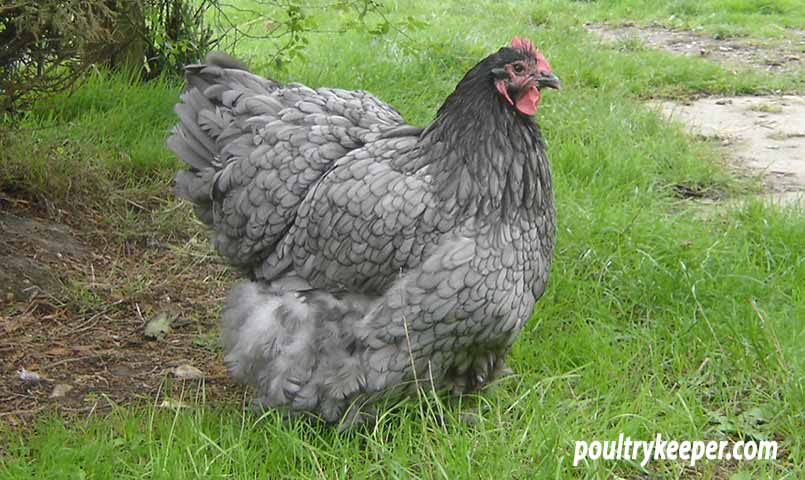
The Orpington is a dual-purpose bird from the town of the same name in the English county of Kent. It was created by crossing Plymouth rocks with other breeds, including Minorcas and Langshans.
The original birds of this breed were black – they were created as show birds, and the black color was intended to hide the dirt and smog of London. However, nowadays, other colors exist, including the popular buff as well as a blue version that appears gray.
Orpingtons are still primarily show birds, but they can also be kept for both eggs and meat. A productive Orpington hen can lay between 150 and 200 eggs per year, and due to their large size – roosters can weigh in at more than 10lbs – they are great for the table too.
Furthermore, the hens are known to go broody, so they are a good breed if you plan to raise chicks and need help incubating them or looking after them after they hatch.
5. Wyandotte
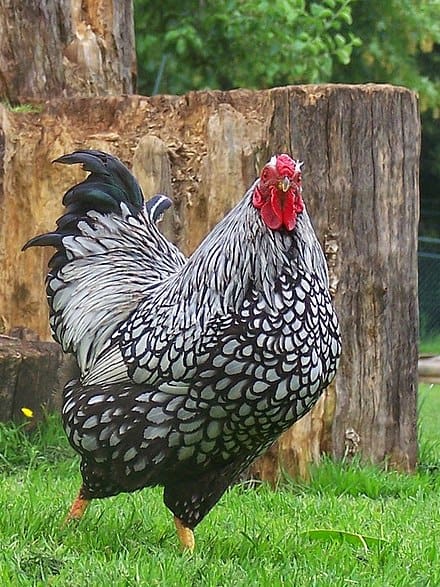
Named after the indigenous Wyandot people, the Wyandotte is an American breed that is kept for both egg production and meat.
It has existed since the 1870s, and the American Poultry Association recognizes nine colors, including blue – which appears gray.
With an annual egg-laying output of well over 200 eggs in their most productive early years, these birds are popular among those most interested in their eggs. Another advantage is that they begin laying earlier than many other breeds.
However, they are a large, fast-growing bird that can reach as much as 9lbs in a much shorter time than many other breeds, and their yellow flesh is considered particularly tasty, so it’s easy to understand why they are a popular meat chicken too.
On the other hand, they aren’t particularly broody and don’t make good mothers, so they aren’t the best option for people looking to raise chicks.
6. California gray
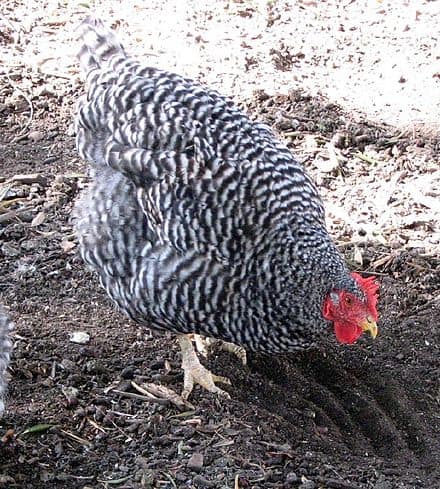
Developed as a dual-purpose chicken in 1930s California, this is a breed that has a lot going for it.
It can lay up to 300 eggs a year in the early part of its life, and at 4.5lbs when fully grown, it’s a popular bird for the pot too.
California grays are known as a cold-hardy breed that is low-maintenance and easy to care for. They have a sociable, friendly disposition and can also become broody, which is useful for those hoping to raise chicks.
Adults display a barred gray plumage, but the breed is not recognized by the American Poultry Association, so no standards exist. In addition, despite its many advantages, the popularity of this breed has waned and is now considered rare.
7. Cochin
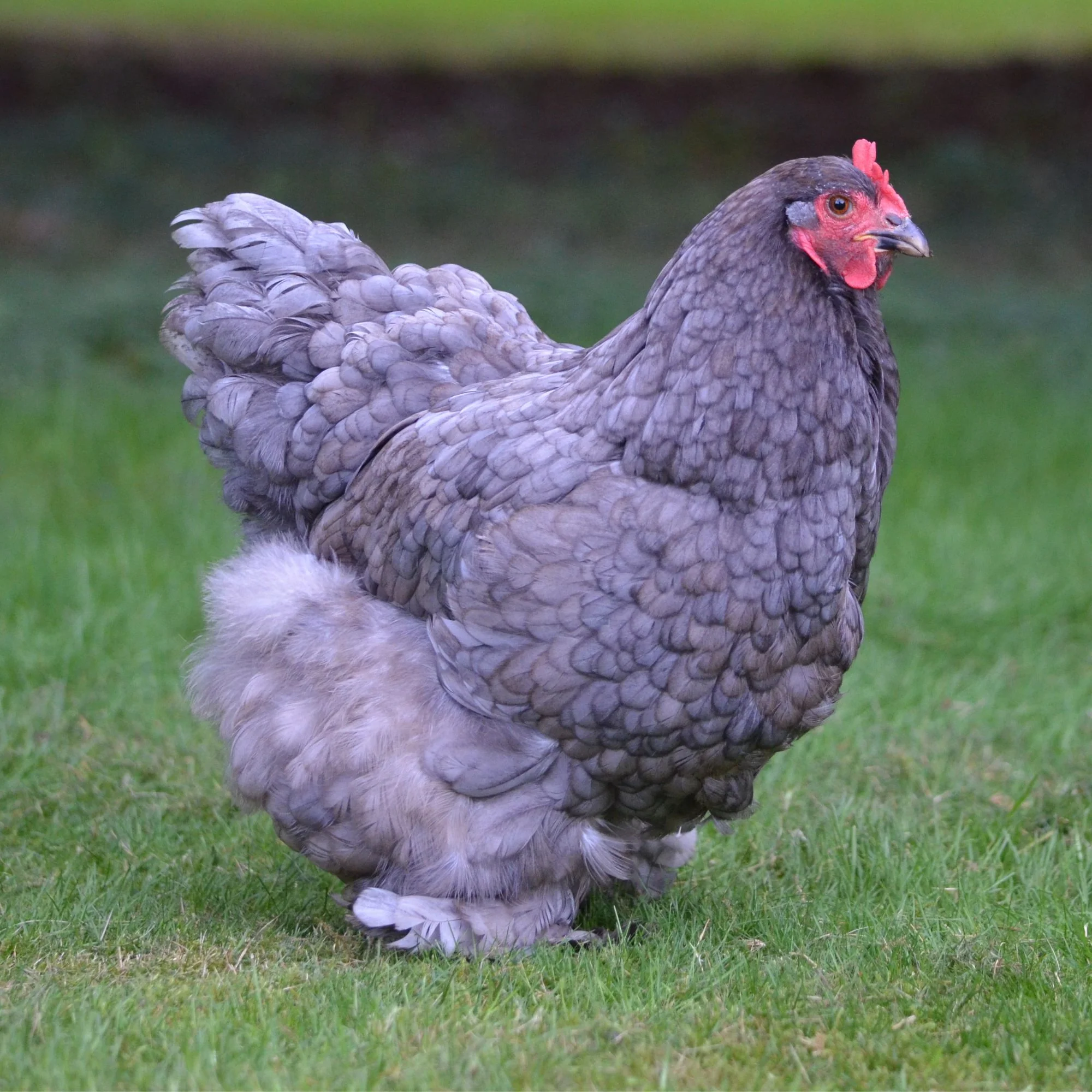
The cochin, formerly known as the Cochin-China or the Shanghai, is a breed that was created from large chickens brought to Europe and the US in the 1840s and 50s.
Apart from their large size, their main distinguishing feature is their feathered feet and legs, which give them a particularly cute and cuddly appearance.
They are primarily a chicken breed that is intended for exhibition since they aren’t a practical breed to keep. This is because their flamboyant plumage requires extra care since they are more prone to parasites such as lice and mites than most other breeds.
In addition, despite their size, they are not a good table bird since their meat has an unpleasant color and texture.
That said, they are good layers of large eggs and will continue to lay well into the winter months, so keeping one or two of these birds for egg production is an option.
They are also good mothers and will go broody – they can even be used to incubate duck and turkey eggs in addition to chicken eggs.
Furthermore, they have a friendly and amenable character, making them a good choice as a family pet.
Cochins are available in several colors, one of which being a gray-hued blue.
8. Silkie
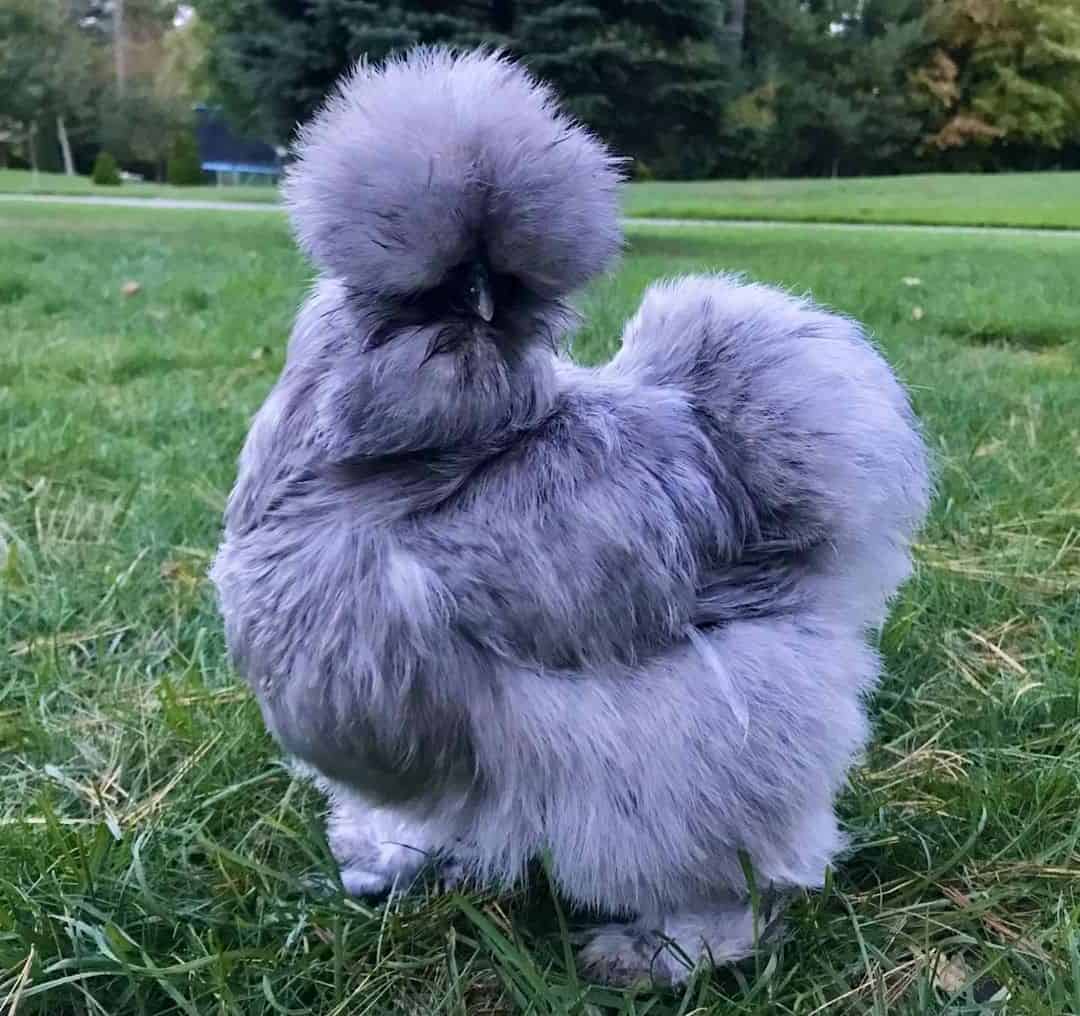
Among the most unusual and distinctive of all chicken breeds, the silkie is famous for having a plumage that more resembles the hair of a mammal than the feathers of a bird.
They probably originated in China, and Marco Polo is thought to have encountered them on his travels there. Later, when they became more common in Europe, myths about them spread, with some people even believing they were a cross between chickens and rabbits!
Other than their fluffy plumage, they also have several other distinguishing features, including black skin and bones as well as blue earlobes and an extra toe on each foot.
They are small birds and are among the most docile of chicken breeds, making them a suitable breed to keep as a pet. They are also exceptional sitters that are often used to incubate the eggs of other chickens as well as those of other types of poultry.
Unfortunately, their timid nature means they are often the victims of bullying by more dominant breeds, and they don’t do well in colder areas.
They come in a range of colors – gray is among the official options, as are lavender and blue.
9. Sapphire Gem
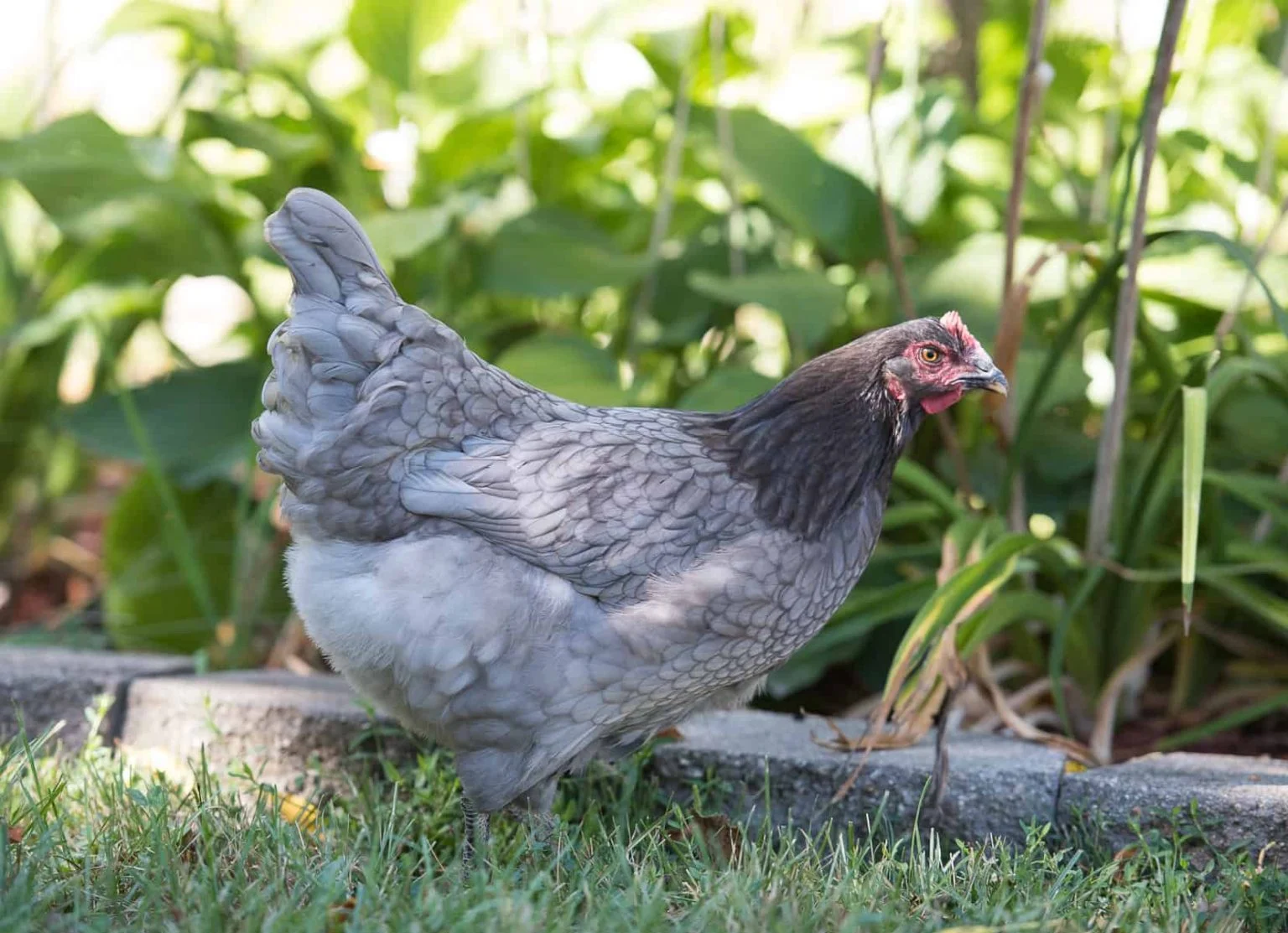
The sapphire gem was the result of a cross between two distinctively colored Plymouth rocks, and although it is arguably not a true breed – and isn’t recognized by any poultry standards associations – its striking colors are seeing it gain in popularity.
It displays a mixed plumage of gentle blues, lavenders and grays – the only possible coloration for this breed – and it also has a reputation for docility and friendliness.
Other than its appearance, it is valued for its laying performance, with hens producing over 250 eggs in their most productive years.
These birds are also known to be expert foragers, making them an independent breed that’s ideal for free ranging. They are also quick to spot any lurking predators, so they are good at looking out for themselves.
10. Pekin

Although the pekin derives its name from Peking, the old spelling of Beijing, it is essentially a British breed that was created from birds that arrived in Europe from China in the 19th century.
The pekin is a bantam breed that has no full-sized equivalent. However, it is closely related to the cochin, and some people regard the cochin as the full-sized version and the pekin as the bantam of the same breed.
Like the cochin, the pekin is known for its feathered feet and legs. They come in a wide range of colors, including a striking lavender.
These birds have an especially docile and friendly temperament, and with the correct training, they are amenable to being handled. These characteristics along with their diminutive size make them an ideal breed to keep as a pet, even for families with small children.
However, they are poor egg-layers, don’t provide much meat and are not a broody breed, so they are not a good pick for anyone looking for a functional bird rather than just one to provide companionship.
11. Ameraucana
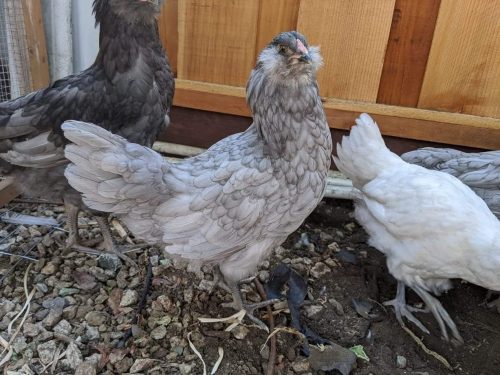
The Ameraucana is a version of the Chilean Araucana that was bred in the US in the 1970s to retain the breed’s distinctive blue eggs while eliminating the lethal allele present in the original.
As a result, the Ameraucana is tailed, muffed and bearded – although it shares some of the other characteristics like the pea comb with the parent breed.
The Ameraucana exists in several colors, including blue – which has a distinctly gray appearance.
These birds are usually kept for their eggs – of which they are productive layers – due to their unique blue hue.
Plenty of gray chicken breeds to choose from
As we have seen, whether you are looking for a meat bird, an egg-layer, a dual-purpose breed or simply a pet, there’s no shortage of chicken breeds available in gray.
Although they might not all be considered gray officially, other official colors like blue and lavender also appear gray, giving you lots of potential gray chicken breeds to choose from.

